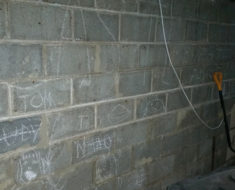
There are lots of things the Earth can offer to us. It provided us almost everything from shelter to food and made our lives convenient over time. Through science and technology, our daily routine is easier way back hundred years ago: discoveries and innovation, and many more advancements are still going on.
However, hundreds of questions lie beneath and above the Earth with no solution or answers until now. The mysteries are still hanging, and even so, many scientists cannot answer the seemingly basic queries about geology.
The Mysteries Around Us
Even though we learn science and geology at school, we can still figure out some basics about what, where, why, and how things exist in this modern world. There are not enough books or other references that will support the answers to those mind-boggling questions.
What Keeps Earth Scientists on Their Toes?
The purpose of this list of unresolved issues is to provide an up-to-date, fully-referenced overview of the most critical contemporary scientific concerns, controversies, paradoxes, and difficulties in Geoscience, with a particular emphasis and a specific focus on the Solid Earth. The compilation of these questions will aid you to know more about geology and other stuff.
Here are the top 50 lists of the world’s unsolved geosciences problems that you might also be wondering about.
Below are the unsolved geosciences problems that are mainly discussed on geosciences forums online. One of the amazing communities is Geology Buzz, where students and professionals find excellent knowledge of many mysterious questions about earth science.
1.What caused the formation of the Earth and other planets?
2.Were planets created in their current locations? Or do orbital changes occur on a somewhat regular basis?
3.What factors influenced the deep layering of the solar planets’ various compositions?
4.Was there a collision between the Earth and another planet, Theia, which resulted in the creation of our satellite?
5.There is strong evidence, such as measurements of a shorter length of the Earth’s rotation and a shorter duration of the lunar month in the past, that the Moon was considerably closer to the Earth during the early phases of the Solar System.
6.Do you know what the Earth’s long-term thermal balance is?
Since it was created via the accretion of chondrites, how did its interior temperature decay?
7.What is the relative abundance of radiogenic materials in the interior?
8.Is it possible that a “faint newborn Sun” ever warmed a “snowball Earth?”
9.What caused plate tectonics to be the dominating activity on Earth alone?
10.Is it possible that the planet cooled down before the formation of plate tectonics?
11.Was the Earth’s crust created during the early stages of its development, or is it the product of a slow distillation of the mantle that continues today, coupled with crustal recycling, during the beginning stages of the Earth’s development?
12.In what ways are magmatic systems organized, and where are they located that have the potential to erupt as supervolcanoes?
13.In what ways do viscosities and densities of the magma chambers differ from one another? What are the specifics of magma migration like?
14.What is the exact nature of the chemical heterogeneity connected with the Gutenberg discontinuity, and how does it manifest itself in the laboratory?
15.Is it possible to determine the light alloying elements in the Earth’s outer core?
16.What is the origin of the ice caps of the Arctic Ocean?
17.What is it that regulates the dynamics of thunderstorm tracks?
18.Can you tell me how resistant the ocean is to chemical perturbations?
19.What has been the extent of life’s contribution to the shaping of the Earth’s surface?
20.Is there anything that regulates the time scale of topographic decay?
How can geologists accurately forecast the occurrence of devastating earthquakes?
21.When inverting for structure, lithology, and fluid content, how should various geophysical data sets be weighted differently?
22.If observed seismic attenuation is due mainly to intrinsic absorption, such as irreversible frictional losses, or extrinsic absorption, such as the redistribution of multiply dispersed energy in a layered media, is there a reliable method to determine the cause of the attenuation?
23.How can we describe and quantify error and uncertainty across the collection, processing, and interpretation processes, and finally into the analysis process?
24.In the presence of ‘noise’ (multiples, refractions, repercussions, and so on), what signal or information can we recover that is useful?
25.How can we gain the greatest of the whole spectrum in terms of collection, processing, interpretation, and analysis, and why should we?
26.Whether or whether there is a “best practice” in regards to tying wells, and if so, what is it?
27.What precisely is AVO-friendly processing, and how does it benefit you?
28.If an earthquake occurs, can it be predicted where it will happen, how severe it will be, and when it will occur?
29.Do mantle plumes occur in the real world?
30.What causes magnetic reversals to occur?
31.Is there a cyclical pattern to catastrophic extinctions?
32.Is it more likely that the Earth’s Physico-chemical processes cause climate change than that they react to it?
33.Will the polar ice caps be removed entirely in the future?
34.What was the precise sequence of events that led to the end-Permian extinction, and how did it occur? Is it the end of the Cretaceous?
35.Did the city of Atlantis exist?
36.When seen from space, why do orogens seem to be curved?
37.Are the interiors of the plates moving in a steady-state linear manner?
What is their degree of rigidity, and why and when did they deform?
38.What is the frequency of volcanic flank collapses, and what are the reasons for these failures?
39.How should volcanic danger be assessed, and how big do volcanic eruptions generate the possible tsunamis?
40.How can the forecasting of volcanic explosions be made more accurate?
41.Is it possible to infer previous tectonic and climatic circumstances from this information?
42.What factors contribute to the development of plateaus in mountainous areas?
43.What are the processes that cause landslides?
Is it possible to properly evaluate the danger of a landslide?
44.What are the mechanisms that are responsible for sculpting the underwater relief and transporting submarine sediment?
45.What processes are at work in developing the turbiditic currents that transport material from continental platforms to the deepest regions of the ocean’s interior?
46.What caused the formation of the world’s most extensive salt deposits?
47.What was the temporal development of the salt monster that accumulated in the Mediterranean during the so-called Messinian Salinity Crisis, in particular?
48.What are the upper and lower limits of subterranean life, and how much biomass does underground life contribute to the total?
49.How much of the current climate change can be connected to human activity?
50.What effect would be increasing emissions from a rising global population combined with growing consumption have on the climate?









































